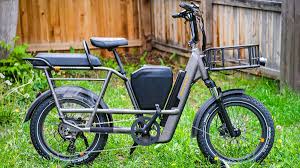Electric bicycles, commonly known as E-BIKES, have grown in popularity over the past decade. By combining the convenience of traditional bicycles with the power of electric motors, e-bikes offer a compelling solution to the challenges of urban transportation. This article explores the various aspects of e-bikes, including their benefits, technological advancements, market trends, and potential drawbacks.
What are e-bikes?
E-bikes are bicycles that are equipped with an electric motor to provide propulsion. They come in a variety of forms, from pedal-assisted bikes, where the rider must pedal while the motor provides a boost, to throttle-assisted models where the motor can propel the bike independently. The motor is usually powered by a rechargeable battery and the level of assistance can often be adjusted by the rider.
Advantages of e-bikes
Environmentally friendly transport
E-bikes are a more environmentally friendly alternative to cars and motorbikes and do not emit any direct pollutants, making them an excellent choice for environmentally conscious commuters looking to reduce their carbon footprint. As cities around the world struggle with air pollution, e-bikes offer a sustainable transportation solution.
Cost-effective commuting
Compared to cars, e-bikes are significantly cheaper to buy, maintain and run. There are no fuel costs and maintenance is relatively simple and inexpensive. For Scottish commuters, e-bikes can be a cost-effective alternative, especially given rising fuel prices and the high cost of owning a car.
health and fitness
Although e-bikes offer electric assistance, they still require pedaling, allowing for a moderate level of physical activity. This makes them a great option for anyone looking to incorporate exercise into their daily routine without the strain of traditional cycling. The adjustable assistance levels allow riders of all fitness levels to enjoy cycling.
Traffic and parking
E-bikes can navigate congested urban areas more easily than cars, reducing commute times. They also require less parking space, which is a significant advantage in crowded cities. This ease of navigation and parking contributes to their growing popularity among city dwellers.

Technological advances
Battery technology
Recent advances in battery technology have significantly improved the range and efficiency of e-bikes. Lithium-ion batteries are commonly used, which are lightweight and have high energy density. Some models can travel up to 100 miles on a single charge, making them suitable for longer commutes.
Intelligent functions
Modern e-bikes often come with smart features such as GPS navigation, mobile app integration and fitness tracking. These features enhance the riding experience by providing real-time data on speed, distance and battery life, allowing riders to plan their routes more effectively.
Lightweight materials
The use of lightweight materials such as aluminum and carbon fiber in the construction of e-bikes has improved their performance and durability. These materials make e-bikes easier to handle and transport, increasing their appeal to urban commuters.
Market trends
Growing popularity
The global e-bike market is witnessing exponential growth attributed to increasing urbanization, environmental concerns, and technological advancements. According to market research, the e-bike market is expected to continue its upward trend, with Asia Pacific and Europe leading in adoption rates.
State support
Many governments recognize the benefits of e-bikes and offer incentives to encourage their use. These incentives include subsidies, tax breaks and investment in cycling infrastructure. Such support is crucial to encourage more people to switch to e-bikes.
Possible disadvantages
Security concerns
Although e-bikes offer numerous benefits, safety remains an issue. Higher speeds and heavier weight compared to traditional bikes can lead to more serious accidents. It is important that cyclists wear appropriate safety equipment and that cities develop infrastructure that supports the safe use of e-bikes.
Regulatory challenges
The rapid growth of e-bikes has outpaced the legal framework in many regions. Clear regulations are needed regarding their use, speed limits and the places where they can be ridden. Consistent and clear regulations will help to integrate e-bikes safely into the urban transport ecosystem.
Diploma
E-bikes are changing the way people navigate urban environments, providing an environmentally friendly, cost-effective and health-conscious mode of transport. With continued advances in technology and increasing government support, the future of e-bikes looks promising. However, addressing safety and regulatory challenges will be crucial to fully realise their potential and ensure they make a positive contribution to urban mobility.













